Thingiverse
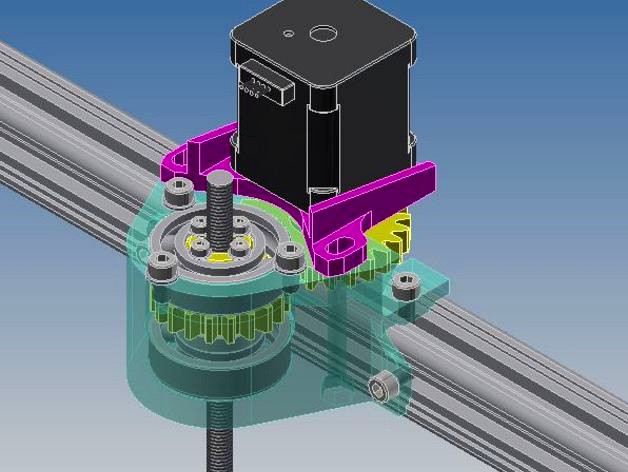
3Drag Central z-axis with trapezoidal leadscrew, (Velleman k8200) by fede27
by Thingiverse
Last crawled date: 3 years ago
English Below
NB Consiglio la seguente soluzione alternativahttp://www.thingiverse.com/thing:1854399
Questa è una versione alternativa dell'idea di sgabolab di asse Z centrale per 3Drag.https://www.thingiverse.com/thing:1496357
NB. Controllare subito se la chiocciola della vostra barra è compatibile con questo design (ho caricato anche il modello solido .stp completo).
Non si ricerca un'aumento della risoluzione elettronica (step/mm) ma un miglioramento della meccanica.
Occorrente:
Barra trapezoidale 40 o 50 cm diametro 8 mm (passi possibili 8mm/giro, 4mm/giro o 2mm/giro) e sua chiocciola
2 x cuscinetti skf 6004 o equivalenti
3 x M5 x 10 mm a testa cilindrica
10 x M5 x 12 mm a testa cilindrica
2 x M5 x 60 mm a testa cilindrica
12 x dadi M5
4 x M3 x 30 mm
4 x M3 x 8 mm a testa cilindrica
4 x dadi M3
6 x grani M3 (lunghi 6 o 8 mm)
Rondelle M5 e M3
Si vedano le immagini per il montaggio. Il concetto è: la chiocciola ruota supportata dal banco di cuscinetti e fa avanzare verso l'alto la barra filettata che è connessa rigidamente agli elementi traslanti lungo Z (in pratica non è più la barra filettata a ruotare su se stessa ma la chiocciola).
Si può utilizzare questa modifica utilizzando barre filettate trapezoidali di diametro 8 mm con differenti passi (8mm/giro, 4mm/giro 2mm/giro). La coppia di ruote dentate ha un rapporto di trasmissione di 4/5.
Considerando un microstepping di 1/16 si hanno le seguenti risoluzioni:
Barra da 8mm/giro -> L'asse Z fa 10mm/giro -> 320 step/mm -> 3.125 um/step
Barra da 4mm/giro -> L'asse Z fa 5mm/giro -> 640 step/mm -> 1.5625 um/step
Barra da 2mm/giro -> L'asse Z fa 2.5mm/giro -> 1280 step/mm -> 0.78 um/step
Queste configurazioni sono state studiate per utilizzare altezze di layer multiple di 0.05 mm in quanto uno step intero del motore produce nei 3 casi un avanzamento di 10mm/200=0.05, 5mm/200=0.025, 2.5/200=0.00125. Infatti è buona norma utilizzare altezze di layer multiple del full step del motore (Vedere per approfondimenti http://manual.slic3r.org/troubleshooting/troubleshooting#z-wobble).
P.S. Se utilizzate la vite con passo 8mm/giro assicuratevi che il moto retrogrado della chiocciola sia impedito durante la stampa.
Ricorda inoltre di cambiare il parametro step/mm dell'asse Z della tua stampante!!!
ENGLISH:
NB: my advice. This mod is better:http://www.thingiverse.com/thing:1854399
This is a mod of the first idea of central z-axis for 3Drag by Sgabolab.https://www.thingiverse.com/thing:1496357
NB. Check immediately if your trapezoidal nut fits this design (I uploaded the solid model .stp).
This design improves the Z-axis of 3Drag from a mechanical point of view. The final electronic resolution is not higher than the standard one.
You need:
A trapezoidal lead screw (diameter 8 mm) of length 40 or 50 cm. You can use leadscrews with different lead or pitch (8mm/turn, 4mm/turn or 2mm/turn).
2 x skf 6004 ball bearings.
3 x M5 x 10 mm with socket head
10 x M5 x 12 mm with socket head
2 x M5 x 60 mm with socket head
12 x M5 nuts
4 x M3 x 30 mm
4 x M3 x 8 mm with socket head
4 x M3 nuts
6 x M3 set screws (of length 6 or 8 mm)
Various M3 and M5 washers
See the images for the assembly.
The gearing has a ratio of 4/5. Depending on the lead of your leadscrew (8mm/turn, 4mm/turn, 2mm/turn) you get the following resolution (with 1/16 microstepping):
8mm/turn leadscrew -> The Z axis moves 10mm/turn -> 320 step/mm -> 3.125 um/step
4mm/turn leadscrew -> The Z axis moves 5mm/turn -> 640 step/mm -> 1.5625 um/step
2mm/turn leadscrew -> The Z axis moves 2.5mm/turn -> 1280 step/mm -> 0.78 um/step
These configurations have been studied to use layer heigth of 0.05mm, 0.1mm, 0,15mm, 0.2mm and so on... (multiple of 0.05mm). This because a full step of the motor correspond respectively to 10mm/200=0.05, 5mm/200=0.025, 2.5/200=0.00125. A layer height multiple of the full step of the stepper motor (in mm) is a good choice (see http://manual.slic3r.org/troubleshooting/troubleshooting#z-wobble)
P.S. if you're using the 8mm/turn leadsrew pay attention to the backward motion. You have to avoid backward motion of the nut during printing.
Remeber to update the steps/mm parameter of the Z axis of your printer.
NB Consiglio la seguente soluzione alternativahttp://www.thingiverse.com/thing:1854399
Questa è una versione alternativa dell'idea di sgabolab di asse Z centrale per 3Drag.https://www.thingiverse.com/thing:1496357
NB. Controllare subito se la chiocciola della vostra barra è compatibile con questo design (ho caricato anche il modello solido .stp completo).
Non si ricerca un'aumento della risoluzione elettronica (step/mm) ma un miglioramento della meccanica.
Occorrente:
Barra trapezoidale 40 o 50 cm diametro 8 mm (passi possibili 8mm/giro, 4mm/giro o 2mm/giro) e sua chiocciola
2 x cuscinetti skf 6004 o equivalenti
3 x M5 x 10 mm a testa cilindrica
10 x M5 x 12 mm a testa cilindrica
2 x M5 x 60 mm a testa cilindrica
12 x dadi M5
4 x M3 x 30 mm
4 x M3 x 8 mm a testa cilindrica
4 x dadi M3
6 x grani M3 (lunghi 6 o 8 mm)
Rondelle M5 e M3
Si vedano le immagini per il montaggio. Il concetto è: la chiocciola ruota supportata dal banco di cuscinetti e fa avanzare verso l'alto la barra filettata che è connessa rigidamente agli elementi traslanti lungo Z (in pratica non è più la barra filettata a ruotare su se stessa ma la chiocciola).
Si può utilizzare questa modifica utilizzando barre filettate trapezoidali di diametro 8 mm con differenti passi (8mm/giro, 4mm/giro 2mm/giro). La coppia di ruote dentate ha un rapporto di trasmissione di 4/5.
Considerando un microstepping di 1/16 si hanno le seguenti risoluzioni:
Barra da 8mm/giro -> L'asse Z fa 10mm/giro -> 320 step/mm -> 3.125 um/step
Barra da 4mm/giro -> L'asse Z fa 5mm/giro -> 640 step/mm -> 1.5625 um/step
Barra da 2mm/giro -> L'asse Z fa 2.5mm/giro -> 1280 step/mm -> 0.78 um/step
Queste configurazioni sono state studiate per utilizzare altezze di layer multiple di 0.05 mm in quanto uno step intero del motore produce nei 3 casi un avanzamento di 10mm/200=0.05, 5mm/200=0.025, 2.5/200=0.00125. Infatti è buona norma utilizzare altezze di layer multiple del full step del motore (Vedere per approfondimenti http://manual.slic3r.org/troubleshooting/troubleshooting#z-wobble).
P.S. Se utilizzate la vite con passo 8mm/giro assicuratevi che il moto retrogrado della chiocciola sia impedito durante la stampa.
Ricorda inoltre di cambiare il parametro step/mm dell'asse Z della tua stampante!!!
ENGLISH:
NB: my advice. This mod is better:http://www.thingiverse.com/thing:1854399
This is a mod of the first idea of central z-axis for 3Drag by Sgabolab.https://www.thingiverse.com/thing:1496357
NB. Check immediately if your trapezoidal nut fits this design (I uploaded the solid model .stp).
This design improves the Z-axis of 3Drag from a mechanical point of view. The final electronic resolution is not higher than the standard one.
You need:
A trapezoidal lead screw (diameter 8 mm) of length 40 or 50 cm. You can use leadscrews with different lead or pitch (8mm/turn, 4mm/turn or 2mm/turn).
2 x skf 6004 ball bearings.
3 x M5 x 10 mm with socket head
10 x M5 x 12 mm with socket head
2 x M5 x 60 mm with socket head
12 x M5 nuts
4 x M3 x 30 mm
4 x M3 x 8 mm with socket head
4 x M3 nuts
6 x M3 set screws (of length 6 or 8 mm)
Various M3 and M5 washers
See the images for the assembly.
The gearing has a ratio of 4/5. Depending on the lead of your leadscrew (8mm/turn, 4mm/turn, 2mm/turn) you get the following resolution (with 1/16 microstepping):
8mm/turn leadscrew -> The Z axis moves 10mm/turn -> 320 step/mm -> 3.125 um/step
4mm/turn leadscrew -> The Z axis moves 5mm/turn -> 640 step/mm -> 1.5625 um/step
2mm/turn leadscrew -> The Z axis moves 2.5mm/turn -> 1280 step/mm -> 0.78 um/step
These configurations have been studied to use layer heigth of 0.05mm, 0.1mm, 0,15mm, 0.2mm and so on... (multiple of 0.05mm). This because a full step of the motor correspond respectively to 10mm/200=0.05, 5mm/200=0.025, 2.5/200=0.00125. A layer height multiple of the full step of the stepper motor (in mm) is a good choice (see http://manual.slic3r.org/troubleshooting/troubleshooting#z-wobble)
P.S. if you're using the 8mm/turn leadsrew pay attention to the backward motion. You have to avoid backward motion of the nut during printing.
Remeber to update the steps/mm parameter of the Z axis of your printer.
Similar models
thingiverse
free

3Drag Central belt z-axis with trapezoidal leadscrew by fede27
...have to avoid backward motion of the nut during printing.
remeber to update the steps/mm parameter of the z axis of your printer.
thingiverse
free

3Drag Central z-axis by Pietro92
...dale t8 da 8mm lunghezza 350mm
per il fissaggio sono stati utilizzati 4 perni m5 e 4 bulloni m3 per il fissaggio della chiocciola
thingiverse
free

Z axis Leadscrew to leadscrew coupler (8mm to 5mm) with 0.14mm clearence
...adscrew to leadscrew coupler (8mm to 5mm) with 0.14mm clearence
thingiverse
extra parts required:
2x m3 nuts
2x m3 screws (8mm+)
thingiverse
free

z axis for plotter by gitamani
...5x9 mm - rondella 1x stepper motor nema17 o similar: i used an eleks maker 42hs34-1304a 2x screw m3x10...
3dwarehouse
free

supporto chiocciola asse z
...supporto chiocciola asse z
3dwarehouse
supporto chiocciola asse z
thingiverse
free

Pit Stop Head for U30 Pro by davcbr
...otore e corpo estrusore da 6025 + 5015 di raffreddamento hotend
hotend dragon o v6
perfetta integrazione con doppio z motorizzato
thingiverse
free

Ender-4 Z fix by sakuandmomo
...ender-4 z fix by sakuandmomo
thingiverse
risoluzione del problema dell asse z. evita la torsione della barra t8
thingiverse
free

Prusa Steel X axis with tensioner and 8mm leadscrew support by fedewolfie
...ner and a m5 screw and nut for the toothed idler, i use a cheap aliexpress toothed idler with a m5 bore.
prints without supports.
thingiverse
free

2mm, 4mm, 6mm, 8mm and 10mm m3 standoffs
...2mm, 4mm, 6mm, 8mm and 10mm m3 standoffs
thingiverse
all m3 standoffs.
2mm
4mm
6mm
8mm
10mm
thingiverse
free

Styx i3 8mm x 2mm Lead Screw Z Axis Option by Styx2015
...styx i3 8mm x 2mm lead screw z axis option by styx2015
thingiverse
printed z axis parts for 8mm x 2mm lead screw option.
Fede27
thingiverse
free

Apollo rocket shot glass by fede27
...apollo rocket shot glass by fede27
thingiverse
a simple glass for your shots!
inspired from apollo rocket
thingiverse
free

Flip flops havaianas repair by fede27
...print it with 100% infill!
you need one small wood screw to fix the printed part to the flip flop.
see the attached images.
enjoy
thingiverse
free

3Drag Hotend: CAD of the PTFE parts by fede27
... by fede27
thingiverse
cad files (.iges and .stl) of the 3drag hotend.
parti cad (.iges and .stl) dell'hotend della 3drag.
thingiverse
free

Darth Vader bookmark, star wars by fede27
...erse
a funny bookmark with darth vader face!!!
scale it as you prefer. i uploaded also the solid model (.igs)
enjoy it!
federico
thingiverse
free

Mark Bass logo, bass guitar amplifier by fede27
...er by fede27
thingiverse
mark bass logo!
i uploaded also the dxf contour for a quick edit (for mounting design purposes).
enjoy!
thingiverse
free

3Drag E3D lite6 Transformation by fede27
...ili all'installazione del lite6 (hotend prodotto da e3d) sulla tua 3drag!
hotend altamente raccomandato! funziona molto bene!
thingiverse
free

Sony HDR Action Cam Holder by fede27
...t versions to hold the sony action cam attached to a 10 mm smooth rod.
i uploaded also the solid model for faster changes.
enjoy!
thingiverse
free

3Drag 1.75 mm filament transformation by fede27
...basta cambiare la parte originale come indicato in figura (la parte nuova è quella verde all'interno dell'ellisse rosso).
thingiverse
free

Graphic LCD mount 3Drag Velleman k8200 by fede27
... grafico full graphic smart controller (reprapdiscount). con queste due parti è possibile fissare l'lcd al telaio della 3drag
thingiverse
free

E3D lite 6 hotend CAD Model by fede27
...erse.com/thing:341689 i created the complete cad model of the e3d lite6 hotend. here you can find the solid model in .stp.
enjoy!
3Drag
thingiverse
free

3DRag Enclousure by gigi78
...sure for 3drag
plexiglass enclosure with aluminum rod
http://www.guadagna-scrivendo.it/3drag/chiusura-per-stampante-3d-3drag/
thingiverse
free

3Drag CHOCO by GabrieleDaghetta
...
3d name to apply on m8 threaded rod of the 3drag choco printer.
3drag site: http://www.open-electronics.org/3drag-3d-printer/
thingiverse
free

Paraluce 3drag by MARCONE67
...paraluce 3drag by marcone67
thingiverse
paraluce 3drag
thingiverse
free

3drag XXL by deltaforce
...eltaforce
thingiverse
quando le dimensioni di stampa della 3drag non bastano più, si può trasformarla in una super stampante xxl
thingiverse
free

Pen Holder for 3Drag printer by GabrieleDaghetta
...ter. it utilizes an elastic band to hold the pen against the plate.
3drag site: http://www.open-electronics.org/3drag-3d-printer/
thingiverse
free

3Drag CHOCO side plate by GabrieleDaghetta
...late that falls from the syringe while the printer is on standby.
3drag site: http://www.open-electronics.org/3drag-3d-printer/
thingiverse
free

K8200/3dRag Reel Holder by willygroup
...k8200/3drag reel holder by willygroup
thingiverse
another reel holder for k8200/3drag
thingiverse
free

3DRag Cnc Parkside Lidl by gigi78
...3drag cnc parkside lidl by gigi78
thingiverse
adaptator for 3drag cnc parkside lidl
thingiverse
free

k8200 3Drag Anti-Vibration by unkapputtbar
...k8200 3drag anti-vibration by unkapputtbar
thingiverse
some anti-vibrations for k8200 or 3drag
thingiverse
free

K8200 / 3DRAG lcd support by Frank3
...k8200 / 3drag lcd support by frank3
thingiverse
change lcd support for 3drag / k8200
Velleman
thingiverse
free

testing velleman K8200 by treblasnirp
...testing velleman k8200 by treblasnirp
thingiverse
velleman k8200 with abs settings in cura.
thingiverse
free

Velleman solder station by forrozza
...velleman solder station by forrozza
thingiverse
velleman solder station for the gasiron2 but would fit most butane solder irons.
thingiverse
free

Fan Tool K8400 Velleman by dergringo
...fan tool k8400 velleman by dergringo
thingiverse
fan tool velleman k8400
thingiverse
free

Velleman K8055 Box by Cerberus
...berus
thingiverse
a laser cut enclosure for the velleman k8055 relay project board. might fit the k8055n but this is not tested.
thingiverse
free

Velleman Dice Kit Box by Sadesign
...velleman dice kit box by sadesign
thingiverse
box for velleman mk150 electronic dice kit
thingiverse
free

Mini pc holder Velleman k8200 by treblasnirp
...c holder velleman k8200 by treblasnirp
thingiverse
mini pc holder velleman k8200
thx k8200 flat frame clip velleman 3d printer
thingiverse
free

Velleman K8200 Frame Piece by TheMatt2582
...velleman k8200 frame piece by thematt2582
thingiverse
this is a frame part for a velleman k8200.
it's 15cm or 5.91inch long.
thingiverse
free

Velleman robot arm KSR10 gear by spore29
...ot arm ksr10 gear by spore29
thingiverse
gear for velleman ksr10 robot arm kit.
engrenage pour le kit bras robot velleman ksr10
thingiverse
free

Velleman Metal Detector Enclosure by CodeCreations
...enclosure by codecreations
thingiverse
project enclosure for the velleman metal detector kit, commonly available at radio shack.
thingiverse
free

PSU bracket holder for Velleman K8200 by dan241297
...psu bracket holder for velleman k8200 by dan241297
thingiverse
brackets to hols the psu for the velleman k8200
Leadscrew
thingiverse
free
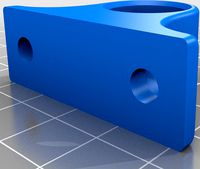
Leadscrew Support by The_Custom_Side
...w support for 8mm leadscrew.
printed in 0.25mm petg
requires bearing (16mm od, 8mm id).
no supports, no rafts, 20% gyroid infill.
thingiverse
free
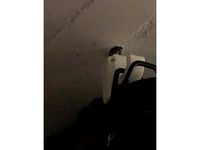
Hook for M8 Leadscrew
...hook for m8 leadscrew
thingiverse
hook which holds on m8 leadscrew without pressure on the screw
thingiverse
free
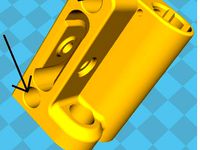
X Idler Leadscrew by GOO2014
...x idler leadscrew by goo2014
thingiverse
x idler leadscrew
thingiverse
free
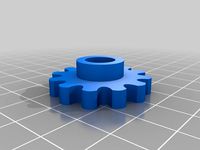
10mm Leadscrew Knob by carboncopy101
...10mm leadscrew knob by carboncopy101
thingiverse
this is a knob for a 10mm leadscrew for manual turning. enjoy.
thingiverse
free

nut for m5 leadscrew by mbzn
...nut for m5 leadscrew by mbzn
thingiverse
created to use as a nut for m5 threaded bar in place of a leadscrew
thingiverse
free
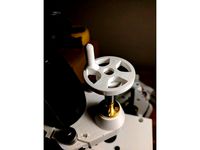
8mm Leadscrew Crank by dakahler
...igned for the cyclone pcb, but can be used on any 8mm leadscrew.
the captive nut for the set screw is designed to be heat-staked.
thingiverse
free

Z leadscrew support for KFL08 by bajmar
...z leadscrew support for kfl08 by bajmar
thingiverse
z leadscrew support for kfl08
thingiverse
free

X-Axis Leadscrew Idler by brisinger
...x-axis leadscrew idler by brisinger
thingiverse
x-axis leadscrew idler
thingiverse
free
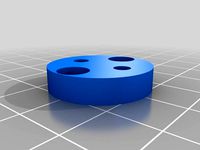
Leadscrew Adapter by PhoenixZip
...rew, and it does not fit our lorei printers.
this adapter allows use of holes that are 16mm apart to our (roughly) 11.85mm holes.
thingiverse
free

Trintcore z-axis modified leadscrew by grubeludouche
... modified leadscrew by grubeludouche
thingiverse
this is a mod to fit a t8 pitch leadscrew, replacing the original m8 leadscrew.
K8200
thingiverse
free

K8200 Mount
...k8200 mount
thingiverse
universal mounting bracket for velleman k8200 printers.
thingiverse
free

K8200 HANDLE by Zalex60
...k8200 handle by zalex60
thingiverse
handle for k8200 printer
thingiverse
free

k8200 belt tension by wreckless19
...k8200 belt tension by wreckless19
thingiverse
needed for k8200
thingiverse
free

k8200 handle by ralfselfjord
...k8200 handle by ralfselfjord
thingiverse
handle for carrying your k8200. to be mounted on the top rail with 2 bolts.
thingiverse
free

Support tablette K8200 by Zalex60
...support tablette k8200 by zalex60
thingiverse
support pour k8200
thingiverse
free

K8200 Pencil Holder by wallie
...k8200 pencil holder by wallie
thingiverse
k8200 pencil holder
thingiverse
free

vm8201 fixation k8200 by domeniconixavier
...vm8201 fixation k8200 by domeniconixavier
thingiverse
kit for printer screenshot 3d k8200
thingiverse
free

testing velleman K8200 by treblasnirp
...testing velleman k8200 by treblasnirp
thingiverse
velleman k8200 with abs settings in cura.
thingiverse
free

Fan Mount K8200 by telegnom
...fan mount k8200 by telegnom
thingiverse
additional fan mount for the k8200 3d-printer.
thingiverse
free

K8200 LCD-Panel by sharandac
...k8200 lcd-panel by sharandac
thingiverse
lcd-panel with sd-card support for the k8200.
Trapezoidal
turbosquid
$10

TRAPEZOID TABLE FOR KITCHEN/DINING ROOM - STEEL/WOOD MATERALS
...kitchen/dining room - steel/wood materals for download as max on turbosquid: 3d models for games, architecture, videos. (1270095)
3d_ocean
$5

WGS Stool by Gallotti&Radice
...minimalistic modern radice seat seating simple steel stool trapezoid trapezoidal wgs general this is the model of the original...
3ddd
free

Ковры Baxter Fifties
... ковер
три ковра baxter:
fifties hexagon,
fifties trapezoid,
fifties triangle.
размер 250x200
3d_export
$20

duplex with 2 bedrooms
...exterior and interior white finish<br>2- supporting masonry structure<br>3- white trapezoidal sheet cover<br>4-does not have mep...
3d_export
$45

Different gems cut set 77 items
..., trapezoid, marquise, princess, oval, heart, emerald, baguette, trilliant, etc. items regular round diamonds in different sizes.
3d_export
$25

duplex with 3 bedrooms
...exterior and interior white finish<br>2- supporting masonry structure<br>3- white trapezoidal sheet cover<br>4<br>-does not have mep...
3ddd
$1

Gaudi Calvet chair
...est is the use of a single support to join the seat to the backrest.
material: varnished solid oak
measurements: 52 x 94 x 54 cm
thingiverse
free

Trapezoid
...trapezoid
thingiverse
trapezoid
thingiverse
free

Trapezoid
...trapezoid
thingiverse
a 6 inch x 2 inch x 2 inch hollow trapezoid meant to show students the sides of a 3 dimensional trapezoid.
3dfindit
free

Ceiling-Trapezoidal
...ceiling-trapezoidal
3dfind.it
catalog: wenger corporation
Central
design_connected
$16

Cave Central
...signconnected
photo-realistic 3d models of the cave central from bonaldo for 3d architectural and interior design presentations.
design_connected
$25

Land Central
...onnected
photo-realistic 3d models of the land central sofa from bonaldo for 3d architectural and interior design presentations.
turbosquid
$7

central table
...id
royalty free 3d model central table for download as blend on turbosquid: 3d models for games, architecture, videos. (1456069)
turbosquid
$5

decoro centrale
...id
royalty free 3d model decoro centrale for download as stl on turbosquid: 3d models for games, architecture, videos. (1169491)
turbosquid
$9

Central Fireplace
...odel central fireplace for download as fbx, dae, obj, and stl on turbosquid: 3d models for games, architecture, videos. (1664580)
turbosquid
$50

Central America
... available on turbo squid, the world's leading provider of digital 3d models for visualization, films, television, and games.
turbosquid
$19

Clock Central
... available on turbo squid, the world's leading provider of digital 3d models for visualization, films, television, and games.
design_connected
$18

Filiofocus Central Fireplace
...central fireplace
designconnected
focus filiofocus central fireplace computer generated 3d model. designed by imbert, dominique.
design_connected
$16

Damasco Central Module
...damasco central module
designconnected
baxter damasco central module computer generated 3d model. designed by navone, paola.
design_connected
$16

Ciel! Wood Central
...ciel! wood central
designconnected
tabisso ciel! wood central computer generated 3d model. designed by lawrance, noé duchaufour.
Axis
3ddd
$1

Мария Axis
...
3ddd
кухня , классическая , axis
модель кухни.
3d_export
$22
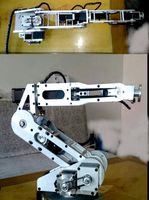
Axis robot 6-axis robotic arm
...ing parts drawings, standard parts purchased parts list, can be produced directly according to the drawings, welcome to download!
3ddd
free
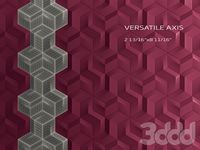
Versatile Axis
...ddd
nexus , плитка
http://bvtileandstone.com/ceramic-porcelain/versatile-axis/
3d_export
$19
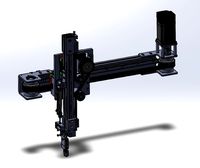
robot 2 axis
...robot 2 axis
3dexport
robot 2 axis
turbosquid
$40

Axis R5F
... available on turbo squid, the world's leading provider of digital 3d models for visualization, films, television, and games.
turbosquid
$40
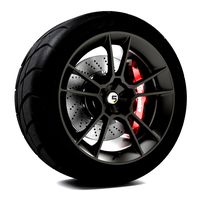
Axis S5F
... available on turbo squid, the world's leading provider of digital 3d models for visualization, films, television, and games.
turbosquid
$30
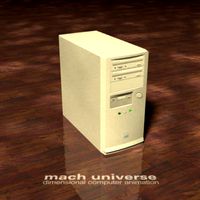
Axis Athlon
... available on turbo squid, the world's leading provider of digital 3d models for visualization, films, television, and games.
turbosquid
$10
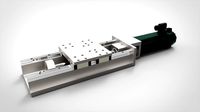
Linear Axis
... available on turbo squid, the world's leading provider of digital 3d models for visualization, films, television, and games.
3d_export
$15

drawing axis
...drawing axis
3dexport
simple rendering of the scene file
3ddd
$1
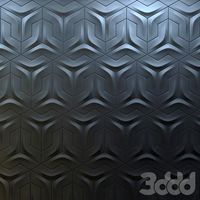
versatile axis ARC
...versatile axis arc
3ddd
versatile , плитка
versatile axis arc red dot design award
Z
3d_export
$5
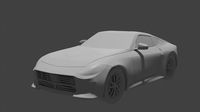
nissan z
...nissan z
3dexport
nissan z
3ddd
$1
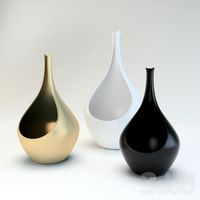
Vase Z
...vase z
3ddd
vase z
3ddd
$1
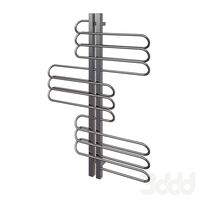
полотенцесушить Z
...полотенцесушить z
3ddd
полотенцесушитель
полотенцесушить z
design_connected
free
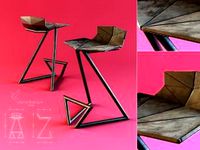
Z-Chair
...z-chair
designconnected
free 3d model of z-chair designed by karman, aleksei.
design_connected
$11
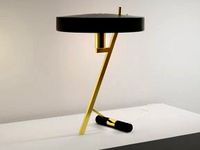
Z Lamp
...z lamp
designconnected
phillips z lamp computer generated 3d model. designed by kalff, louis.
3d_export
$5
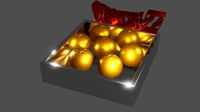
Dragon balls z
...dragon balls z
3dexport
dragon ball z
turbosquid
$20

Fighter Z
...
turbosquid
royalty free 3d model fighter z for download as on turbosquid: 3d models for games, architecture, videos. (1292563)
turbosquid
$9
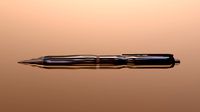
Pen Z
...pen z
turbosquid
free 3d model pen z for download as obj on turbosquid: 3d models for games, architecture, videos. (1686775)
turbosquid
free
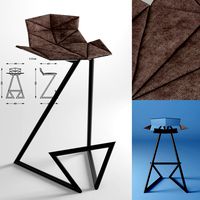
z chair
...z chair
turbosquid
free 3d model z chair for download as max on turbosquid: 3d models for games, architecture, videos. (1410230)
turbosquid
$5

Letter Z
...urbosquid
royalty free 3d model letter z for download as max on turbosquid: 3d models for games, architecture, videos. (1408540)
